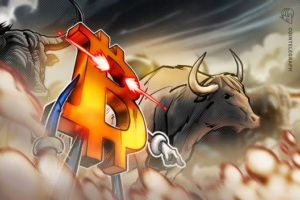The blockchain gaming industry is currently facing significant challenges, often compared to a “game of musical chairs”. At the heart of this crisis is the alarming lack of new capital inflow, which has left many game developers scrambling for sustainability.
According to Theodore Agranat, Web3 director at Gunzilla Games, the predominant issue in the blockchain gaming sector is that “there is no new money coming into the system.” Funding in January fell to just $16 million, a staggering 92% decrease compared to December’s $222 million, as reported by analytics platform DappRadar. This has resulted in existing capital merely being shuffled between various gaming projects.
Recently, unique active wallets (UAW) in blockchain gaming dropped from around 10 million last summer to 7.5 million, indicating a concerning trend. Agranat noted that approximately 70% of Q1 2024 growth was precipitated by airdrop and farming campaigns. DappRadar even dubbed this time the “play-to-airdrop” era, showcasing blockchain games like Kuroro Beasts and AI Arena that have relied heavily on significant airdrops to attract players.
However, Agranat raised a critical point regarding player loyalty, stating, “These are not long term like clients or users of your project or your product.” Many players are exploiting the system by creating multiple crypto wallets to benefit from airdrops, a practice he deems unsustainable. “They will just go from project to project and extract whatever value they can from that project,” he explained, highlighting the transient nature of engagement in the industry.
The pressing question remains: how can the blockchain gaming sector rectify these issues? According to Agranat, focusing on enhancing the gameplay experience is essential for future success. This sentiment echoes a broader industry consensus; developers must prioritize delivering engaging and authentic gaming experiences to attract a dedicated audience, moving beyond reliance on financial incentives alone.
Despite the funding difficulties and declining active user base, blockchain gaming still holds potential for innovative growth. By addressing these foundational challenges and investing in quality gameplay, the industry could reclaim its momentum and secure a brighter future ahead. As the landscape evolves, both players and developers will need to navigate this intricate ecosystem with strategic intention and a commitment to lasting engagement.



